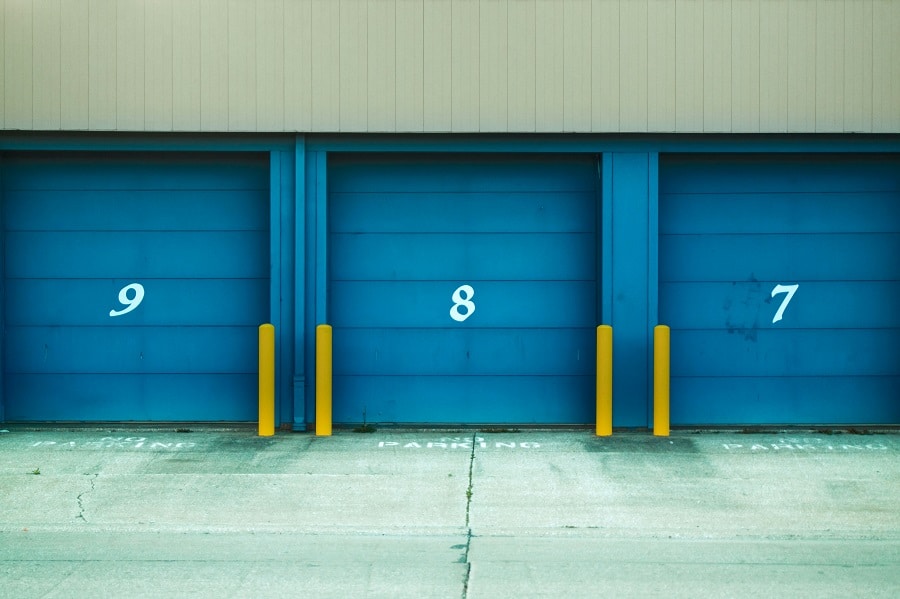How many GB do you need for a website?
When you look at the online world for your business, your company or your own projects, many new terms immediately come to mind. One of the most important specifications of a hosting package is the storage space available in it. In this blog post, we'll take a look at how much storage space a website can consume and what you can take into account.
Of course, not every website uses the same amount of disk space, and you can put two websites side by side and notice a big difference in disk space usage. How this is structured is often related to the basis of a website and how much and what content it has. What kind of website do you want to create? First of all, make up your own mind. Is it an online business card where you present your portfolio, a blog where you share your hobby or passion, a business website, a webshop or all of the above? Hosting at MijnHostingPartner.nl is a blank canvas that you can use to set up your website as you wish.
The foundation of your website - A Content Management System (CMS)
The content management system you use determines how much space a website takes up. It forms the foundation of your website and performs many tasks for you. With a CMS, it is actually possible for anyone to create a website, even without any programming knowledge. This is because you can manage everything visually and therefore don't have to adapt any code to set up a menu on your website, for example. You can easily customize the elements of your website with clicks and inputs via menus.
A CMS itself also takes up some space and differs greatly from one CMS to another. WordPress, the most widely used content management system for beginners and advanced users, is "bare" overall: 71.9 MB and has 2,998 files in 308 folders. Once you start filling and using it, this amount will naturally grow. We will discuss this further below.
The content of a website (Content)
By far the largest part of a website's storage space is its content. Content can take many different forms, and every website makes use of it. Content includes written text, images, videos and audio. All of this content consumes disk space and GBs.
However, it is often a challenge to reach the gigabyte limit with just text and images. As an example, here we have a WordPress website with a total of 5 pages and 132 blog posts.
All of these blog posts contain several images, and the total size of the website is still only 312 MB, which is significantly less than 1 gigabyte. A website or blog created with WordPress can therefore run for many years on a normal SSD hosting package without even coming close to the standard 25 GB of disk space.
Images and photos also work differently than in your cloud service, for example. It is not recommended to upload a raw photo to a website, as you will need to optimize it to get the most out of it so that you not only reduce overall storage space usage, but also keep your website as fast as possible for your users. Scale the images to the size you need before uploading and use a tool like TinyPNG to resize the image.
Doing this from the start will keep your website fast, not cluttered with unnecessary and oversized images and allow it to evolve for years to come. Videos are best hosted externally on platforms that have been created for this purpose. YouTube is by far the best example in this respect. Not only can you keep your website lean, but you can also access the trillions of users on this platform faster. For example, a video that is viewed perhaps 50 times on your own website can be picked up and viewed by many thousands of users on YouTube, some of whom will then also end up on your website.
Natural growth of websites
Over the years, your website's space requirements can grow, especially as you add more content. From time to time, it is advisable to clean up your content management system, for example by removing unused plug-ins or themes. Media that you no longer use on your website or old logos can also be removed to avoid cluttering your website files as much as possible.
Space consumption in the background
A website that uses a CMS also consumes space in the background, as most content management systems use a database to store and categorize data.
Everything is stored here, e.g. as plain text, which can then be queried and translated in the front end, i.e. what the visitor and you see on the website. As this is just text, so to speak, it only takes up a small percentage of your storage space in almost all cases.
So if your website is 312 MB in total, the database in this example is only 8.9 mb. You should also take into account what else is active behind the website, at MijnHostingPartner.nl we talk about the total disk space of a hosting package. This includes your mail, for example. Here too, the average user has to work hard to get to 25 GB.
Or the limit for our cheapest packages. How much space is your website currently using? Tell us!
